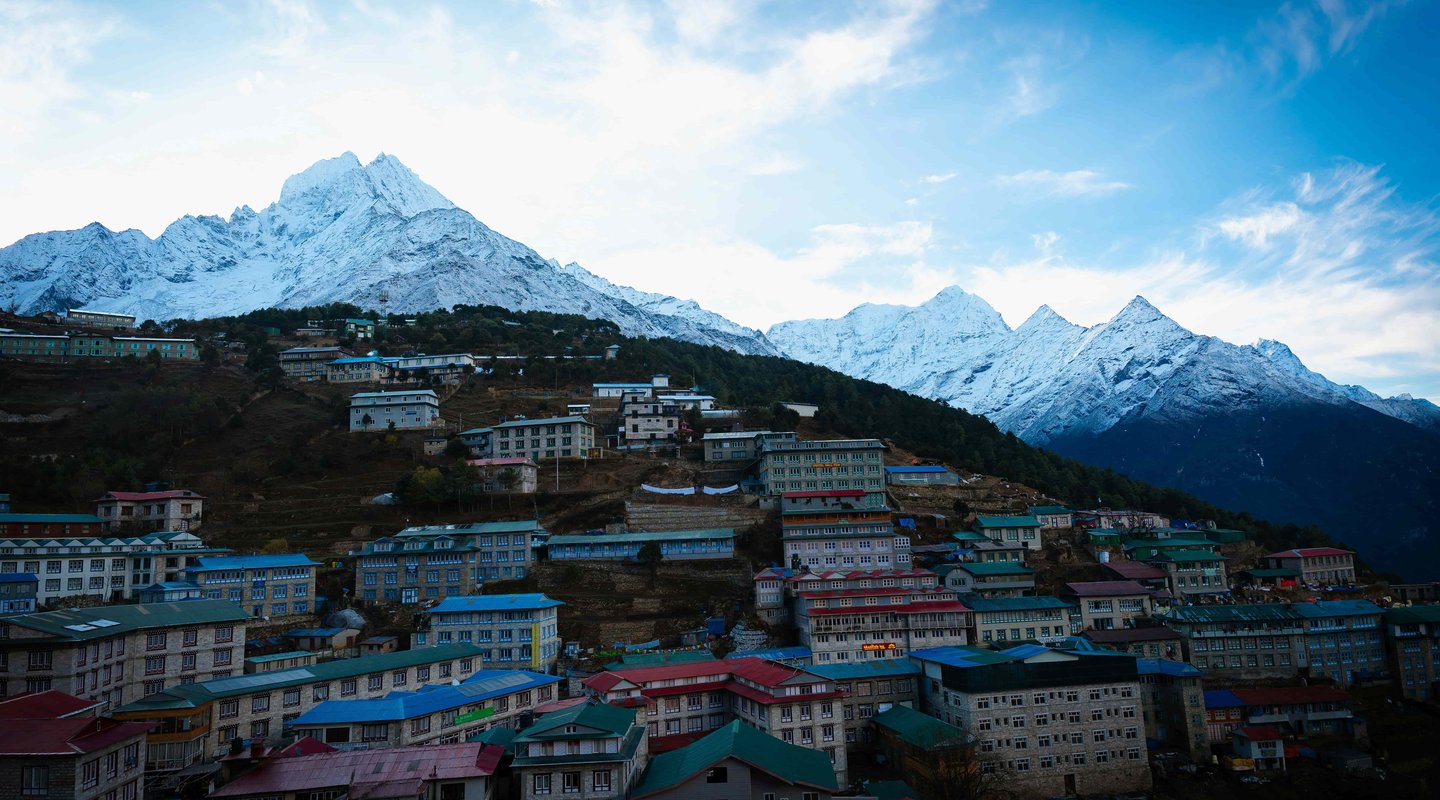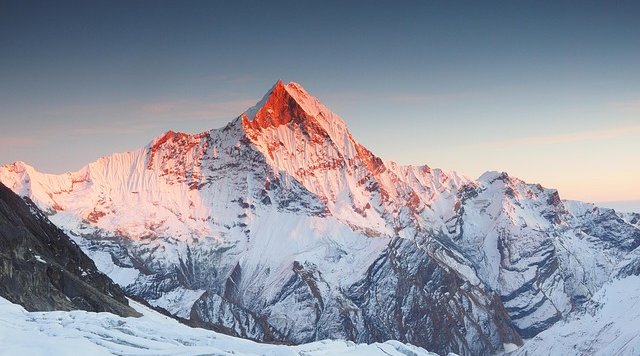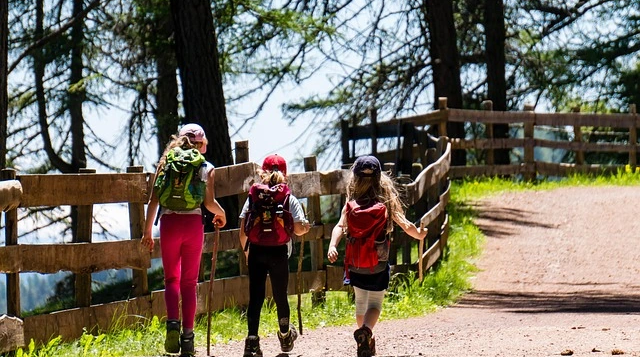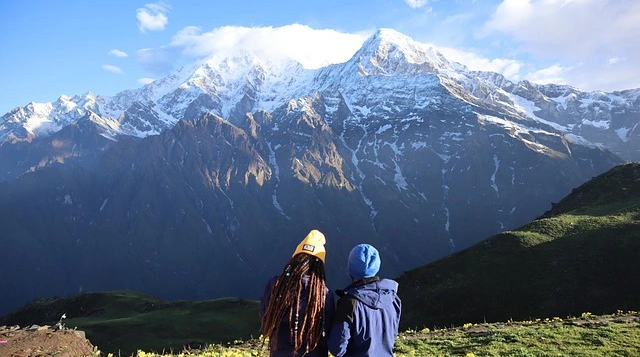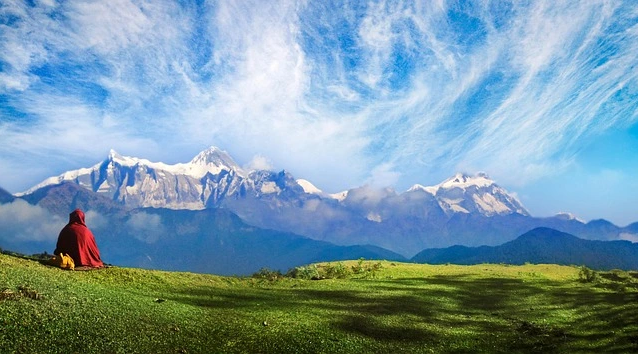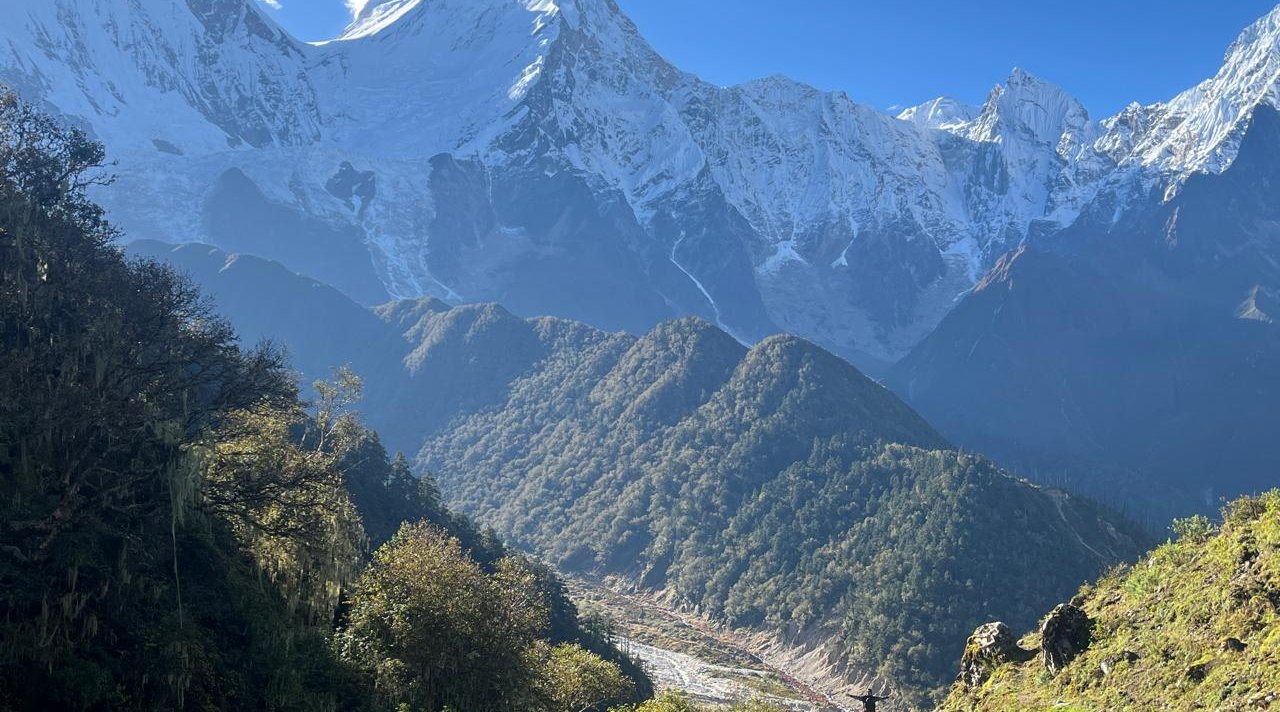The Jiri to Everest Base Camp trek itinerary follows the original Hillary Tenzing route to EBC, offering superior acclimatization through gradual ascent from 1,935m to 5,364m. This 21-day classic Jiri to EBC trek eliminates Lukla flights while traversing authentic Sherpa villages in the Everest trek regions, rhododendron forests, and suspension bridges Everest route style through both Gaurishankar Conservation Area and Sagarmatha National Park.
This comprehensive guide details your complete Everest Base Camp trek from Jiri journey, covering daily distances, elevation profiles, tea houses on Jiri trek, and essential acclimatization in EBC trek protocols. Whether planning solo trekking Jiri to EBC or joining guided expeditions, discover why this historical Everest trek route remains the safest and most culturally rewarding path to Everest Base Camp.
Why Choose the Jiri to EBC 21 Days Itinerary Over Shorter Variations?
The Jiri to Everest Base Camp trek 18-day option might seem tempting, but the 21-day itinerary offers unmatched benefits for acclimatization and cultural experiences Jiri trek enthusiasts seek. This extended timeline follows the acclimatization chart EBC medical experts recommend, significantly reducing altitude sickness Jiri EBC risks.
- Superior Altitude Adaptation: Gradual elevation gain from 1,935m (Jiri) to 5,364m (EBC) over 17 days versus rushed 12-day Lukla starts
- Lower AMS Risk: 40% reduction in acute mountain sickness incidents compared to fly-in treks according to 2024 Nepal Tourism Board data
- Cultural Immersion Opportunities: Extra days in authentic Sherpa villages in Everest trek like Junbesi, Nunthala, and Sete
- Photography Advantages: Morning golden hours at Lamjura La pass trek and evening light for wildlife in Sagarmatha National Park shots
- Physical Conditioning: Natural training for Jiri Everest trek through progressive daily challenges
- Weather Buffer: Built-in flexibility for monsoon trekking Jiri conditions or unexpected winter Jiri EBC trek delays
- Cost Efficiency: Lower overall expenses despite longer duration due to budget Jiri to EBC trek tea house options in lower regions
Best Time for Jiri to Everest Base Camp Trek: Planning Your 21-Day Adventure
Understanding the best season for classic EBC trek planning ensures optimal weather for Jiri to EBC trek conditions throughout your journey. Each season offers unique advantages for different stages of this lengthy itinerary, from the lower rhododendron forests to high-altitude segments.
Spring Season (March-May):
- Lower Section Benefits: Rhododendron forests Jiri trek bloom spectacularly between Days 4-8
- Clear Mountain Views: 80% visibility rate at Kala Patthar viewpoint during morning hours
- Stable Temperatures: Comfortable tea houses on Jiri trek without extreme cold
- Peak Season Considerations: Book accommodations in advance for Namche Bazaar acclimatization days
Autumn Season (September-November):
- Post-Monsoon Clarity: Crystal-clear views from Lamjura La and throughout the route
- Festival Opportunities: Experience Dashain/Tihar celebrations in Sherpa villages
- Moderate Crowds: Less congested than spring, especially on Sete to Junbesi trek sections
- Stable Weather Windows: Minimal precipitation risk for photography tips Everest trek implementation
Off-Season Considerations:
- Winter Jiri EBC Trek (December-February): Possible with proper gear, fewer crowds, challenging Lamjura La conditions
- Monsoon Trekking Jiri (June-August): Lush landscapes, leeches in lower sections, limited mountain views
Pre-Trek Logistics: Bus from Kathmandu to Jiri and Permits for Jiri to EBC
Days 1-3 of your itinerary focus on essential preparations and the journey to the trailhead. Proper planning during these initial days sets the foundation for a successful trek, including securing permits for Jiri to EBC and arranging transportation.
Day 1 - Kathmandu Arrival and Preparation:
- Permits Required: Sagarmatha National Park Entry Permit (NPR 3,000) and Gaurishankar Conservation Area Permit (NPR 2,000)
- Gear Check: Finalize packing list for Jiri EBC trek essentials at Thamel shops
- ATM Availability Everest Trek: Withdraw sufficient cash (last reliable ATMs until Namche)
- Mobile Network Jiri EBC: Purchase NTC/Ncell SIM cards for emergency communication
- Insurance for High Altitude Trek: Verify helicopter rescue insurance coverage up to 6,000m
Day 2 - Final Preparations:
- Porter Hire Jiri Trek: Arrange through agencies (NPR 2,500-3,000/day) or independently
- Download Checklist Jiri Trek: Offline maps, weather apps, emergency evacuation EBC contacts
- Cost of Guide for Jiri EBC Trek: Optional but recommended (USD 25-30/day for licensed guides)
Day 3 - Drive to Jiri:
- Bus Options: Local bus Kathmandu Jiri (NPR 800-1,000, 7-9 hours) or private jeep to Jiri (NPR 15,000-18,000, 6-7 hours)
- Departure Points: New Bus Park for Everest Base Camp trek bus options, depart by 6:00 AM
- Bus vs Drive to Jiri: Public buses offer cultural immersion; private vehicles provide comfort and flexibility
- Arrival in Jiri (1,935m): Check into tea house, prepare for early morning trek start
Day-by-Day Jiri to Lukla Trek: The Lower Section Itinerary
The Jiri to Lukla trek portion spans Days 4-9, covering approximately 95 kilometers through diverse landscapes and cultural zones. This section exemplifies why the historical Everest trek route remains superior for gradual acclimatization.
Day 4 - Jiri to Deurali (2,210m):
- Distance/Duration: 13km, 5-6 hours via Shivalaya
- Trail Highlights: Initial descent to Bhote Koshi River, gradual climb through terraced farmlands
- Cultural Notes: Traditional Tamang and Jirel communities, local millet beer offerings
- Accommodation: Basic tea houses, food on the Jiri trek includes dal bhat and seasonal vegetables
Day 5 - Deurali to Sete (2,575m):
- Distance/Duration: 15km, 6-7 hours crossing multiple ridges
- Key Features: First major climb to Deurali Pass (2,710m), panoramic Gaurishankar views
- Trail Conditions: Well-maintained paths through rhododendron and pine forests
- Photography Opportunities: Sunrise over the Numbur Himal range
Day 6 - Sete to Junbesi (2,675m):
- Distance/Duration: 18km, 7-8 hours via Lamjura La Pass
- Major Achievement: Crossing Lamjura La pass trek at 3,530m (highest point until Namche region)
- Scenic Rewards: First glimpse of Everest on clear days, view from Lamjura La encompasses entire Solu region
- Junbesi Monastery Visit: Evening exploration of Thubten Chholing Monastery
- Acclimatization Note: Natural altitude training without risks
Day 7 - Junbesi to Nunthala (2,194m):
- Distance/Duration: 20km, 6-7 hours through Solu Khumbu transition zone
- Trail Character: Descents and ascents through Ringmo, Phurteng, and Taksindu Pass (3,071m)
- Cultural Immersion: Pure Sherpa villages in the Everest trek begin appearing
- Wildlife Spotting: Himalayan tahr, musk deer possibilities in Gaurishankar Conservation Area
Day 8 - Nunthala to Bupsa (2,360m):
- Distance/Duration: 16km, 5-6 hours including steep Dudh Koshi descent
- Technical Sections: 600m descent to the river, immediate 400m climb
- Bridge Crossings: First major suspension bridges, Everest route experience
- Rest Opportunity: Shorter day, allowing recovery before entering Khumbu
Day 9 - Bupsa to Surke (2,290m):
- Distance/Duration: 14km, 5-6 hours through the lower Khumbu gateway
- Trail Merger: Junction where Jiri trekkers meet the Lukla trail at Surke
- Landscape Shift: Transition from Solu cultural zone to Khumbu proper
- Preparation: Last stop before entering the main Everest trail traffic
Entering Khumbu: Surke to Phakding and Namche Bazaar Acclimatization
Days 10-11 mark your entry into the iconic Khumbu region, where the classic route merges with modern trekking paths. This crucial phase combines continued ascent with essential Namche Bazaar acclimatization protocols.
Day 10 - Surke to Phakding (2,610m):
- Distance/Duration: 13km, 5-6 hours along the Dudh Koshi River valley
- Trail Convergence: Meeting point with Lukla trekkers at Chaurikharka
- Infrastructure Change: Better tea houses on the Jiri trek, and increased amenities
- Water Safety Everest Trek: Purchase bottled water or use purification tablets/UV sterilizers
- Mobile Network Coverage: Improved connectivity for post-COVID Jiri trek tips sharing
- Evening Preparation: Organize for the challenging Namche climb tomorrow
Day 11 - Phakding to Namche Bazaar (3,440m):
- Distance/Duration: 11km, 6-7 hours with 800m elevation gain
- Iconic Features: Hillary Suspension Bridge crossing at 120m height
- Sagarmatha Entry: Official park entrance at Monjo (2,835m)
- First Everest Views: Glimpse from halfway point if weather permits
- Arrival Protocol: Slow final approach to prevent altitude sickness Jiri EBC onset
- Accommodation: A Wide range from budget Jiri to EBC trek lodges to luxury options at Jiri trek establishments
Day 11 (Afternoon) - Namche Exploration:
- Acclimatization Activities: Light walks around the bazaar, visit the Sherpa Museum
- Practical Tasks: ATM availability, Everest trek (last reliable machines), gear shopping
- Communication: Strong mobile network, Jiri EBC coverage for family updates
Mid-Trek Highlights: Tengboche Monastery Visit to Dingboche to Lobuche
Days 12-15 encompass the spiritual and scenic heart of the journey, featuring the renowned Tengboche monastery visit and critical acclimatization at Dingboche. This section showcases why the gradual approach via Jiri creates a more enriching experience.
Day 12 - Namche to Tengboche (3,860m):
- Distance/Duration: 10km, 5-6 hours with spectacular mountain panoramas
- Morning Views: Everest, Lhotse, Ama Dablam from trail viewpoints
- Trail Character: Initial climb to Khumjung junction, gradual descent to Phunki Thenga
- Tengboche Monastery Visit: Attend 3 pm prayers, explore Buddhist artifacts
- Photography Tips Everest Trek: Golden hour illumination on Ama Dablam
- Cultural Experiences Jiri Trek: Interaction with resident monks, butter lamp offerings
Day 13 - Tengboche to Dingboche (4,410m):
- Distance/Duration: 11km, 5-6 hours through alpine landscapes
- Ecosystem Transition: Tree line ends, entering alpine scrub zone
- Villages Passed: Pangboche (the oldest monastery in Khumbu), Shomare
- Acclimatization Strategy: Slow, steady pace, frequent hydration breaks
- Accommodation Notes: Tea house prices Jiri route increase (rooms NPR 500-700)
Day 14 - Dingboche Acclimatization Day:
- Altitude Adaptation: Critical rest at 4,410m following acclimatization chart EBC guidelines
- Day Hike Options: Nagarjun Hill (5,100m) or Chhukung Valley (4,730m)
- Active Rest Benefits: 500-600m climb and return aids adaptation
- Health Monitoring: Check oxygen saturation, watch for AMS symptoms
- Preparation: Organize for a high-altitude push ahead
- Sustainable Trekking Jiri EBC: Support local bakeries, minimize plastic usage
Day 15 - Dingboche to Lobuche (4,940m):
- Distance/Duration: 11km, 5-6 hours across alpine moorland
- Memorial Site: Climbers' memorial at Thukla Pass (4,830m)
- Landscape: Stark beauty of lateral moraine alongside Khumbu Glacier
- Wildlife Spotting: Himalayan tahr, snow leopard tracks possible
- Altitude Effects: Noticeable breathing changes, importance of pace management
High Altitude Push: Gorak Shep to EBC and Kala Patthar Viewpoint
Days 16-17 represent the culmination of your Everest Base Camp trek from Jiri, reaching the ultimate goals of EBC and Kala Patthar viewpoint. The superior acclimatization from your gradual ascent pays dividends at these extreme altitudes.
Day 16 - Lobuche to Gorak Shep (5,170m):
- Distance/Duration: 8km, 4-5 hours along glacier moraine
- Terrain Challenges: Rocky, uneven paths requiring concentration
- Arrival Strategy: Reach Gorak Shep by noon for afternoon EBC attempt
- Accommodation: Most basic tea houses of the trek, limited menu options
- Preparation: Light lunch, hydration for afternoon push
Day 16 (Afternoon) - Gorak Shep to EBC (5,364m) Return:
- Distance/Duration: 6km round trip, 4-5 hours total
- Trail Conditions: Boulder-strewn glacier path, multiple stream crossings
- Base Camp Experience: Seasonal tent cities (April-May), prayer flags, photo opportunities
- Return Timing: Back to Gorak Shep before dark (4:30 pm latest departure)
- Celebration: Achievement of reaching Everest Base Camp via the Jiri map's longest route
Day 17 - Kala Patthar Sunrise and Descent:
- Pre-Dawn Start: 4:00 am departure for Kala Patthar viewpoint (5,545m)
- Summit Timing: 2.5-3 hours to reach the top for sunrise
- View Rewards: 360-degree panorama including Everest, Nuptse, Pumori, Lhotse
- Photography Peak: Best lighting conditions for Everest summit shots
- Descent Route: Return to Gorak Shep for breakfast, continue to Pheriche/Pangboche
- Total Day Distance: 15-18km, depending on chosen stop
Descent Itinerary: Return from EBC to Lukla with Acclimatization Stops
Days 18-20 cover the return from EBC to Lukla, maintaining a measured pace despite improved acclimatization. This descent phase often provides clearer weather windows and opportunities for reflection on your achievement.
Day 18 - Pheriche/Pangboche to Tengboche/Namche:
- Distance Options: 15km to Tengboche or 20km to Namche
- Pace Consideration: Faster descent possible, but joint protection is important
- Alternative Routes: Upper trail via Khumjung for variety
- Cultural Stops: Revisit monasteries with deeper appreciation
- Yoga Retreats Everest Trek: Evening stretching sessions at some lodges
Day 19 - Namche to Monjo/Phakding:
- Distance/Duration: 15-18km, 5-6 hours mostly downhill
- Trail Traffic: Heavier with ascending trekkers, courtesy important
- Last Shopping: Namche Bazaar for souvenirs before lower prices
- Celebration Options: Traditional Sherpa cultural show in Namche (evening before)
Day 20 - Phakding/Monjo to Lukla (2,860m):
- Final Trek Distance: 13-16km, 4-5 hours, gradual ascent to Lukla
- Trail Nostalgia: Retracing initial Khumbu entry points
- Lukla Arrival: Check flight confirmation, celebration dinner
- Contingency Planning: Weather delays possible, maintain a flexible schedule
- Recent Trail Conditions Jiri to EBC: Check with returning trekkers for updates
Wrapping Up: Flight from Lukla to Kathmandu and Post-Trek Reflections
Day 21 marks your transition from trekking achievement to journey completion, with the flight from Lukla to Kathmandu providing a dramatic finale. Recent improvements in aviation safety and scheduling have enhanced reliability for this crucial connection.
Day 21 - Lukla to Kathmandu Flight:
- Flight Duration: 35-40 minutes scenic mountain flight
- Booking Confirmation: Reconfirm with airline office evening before
- Weather Dependencies: Morning flights have 75% better success rate
- Backup Options: Helicopter rescue insurance often covers weather delays
- Kathmandu Arrival: Transfer to hotel, equipment return, certificate collection
Post-Trek Considerations:
- Health Monitoring: Watch for delayed altitude effects, maintain hydration
- Documentation: Organize photos while memories fresh, downloadable Jiri EBC itinerary for sharing
- Feedback: Submit Jiri EBC trek reviews to help future trekkers
- Extension Possibilities: Consider Jiri to Gokyo lakes extension or three passes trek from Jiri for next adventure
Essential Itinerary Tips: Acclimatization Chart EBC, Packing List for Jiri EBC Trek, and Altitude Sickness Prevention
Maximizing success on the Everest Base Camp trek from Jiri requires careful attention to acclimatization protocols and preparation. These evidence-based strategies significantly reduce the difficulty of Jiri to Everest Base Camp challenges.
Acclimatization Best Practices:
- Ascent Rule: Limit sleeping elevation gains to 300-500m above 3,000m
- Hydration Target: 4-5 liters daily, monitor urine color
- Rest Day Protocol: Mandatory at Namche (3,440m) and Dingboche (4,410m)
- Climb High Sleep Low: Day hikes during rest days improve adaptation
- Medication Options: Diamox (125mg twice daily) starting at 3,000m if needed
Essential Gear Priorities:
- Layering System: Base, insulation, shell layers for -15°C at Gorak Shep
- Footwear: Broken-in boots plus camp shoes for tea house comfort
- Sleep System: -15°C sleeping bag, silk liner for hygiene
- Sun Protection: UV rating sunglasses, SPF 50+ sunscreen, lip balm
- Water Treatment: Purification tablets, UV sterilizer, or filtration system
- Women Solo Jiri EBC Trek: Whistle, headlamp, female hygiene products
Health and Safety Protocols:
- AMS Recognition: Headache, nausea, fatigue, and dizziness require immediate descent
- Emergency Evacuation EBC: Know nearest helicopter landing zones
- Communication: Daily check-ins using the mobile network Jiri EBC coverage
- Insurance Verification: Ensure helicopter rescue insurance covers 6,000m altitude
Cultural and Scenic Gems Along the Original Hillary Tenzing Route to EBC
The historical Everest trek route offers unparalleled opportunities for cultural immersion and natural observation. These experiences distinguish the classic Jiri to EBC trek from modernized alternatives, providing deeper connections to Sherpa culture and history.
Lower Route Cultural Treasures (Days 4-8):
- Jirel and Tamang Communities: Traditional architecture, agricultural practices
- Cheese Factory Visits: Trakshindo monastery's Swiss-style cheese production
- Mani Walls: Ancient stone inscriptions requiring clockwise passage
- Traditional Festivals: Potential Dumje or Mani Rimdu encounters (date-dependent)
Natural Highlights Throughout:
- Rhododendron Forests Jiri Trek: 30+ species blooming March-May
- Bird Watching Jiri Route: 200+ species, including Impeyan pheasant, snow cock
- Wildlife in Sagarmatha National Park: Red pandas, Himalayan tahr, musk deer
- Geological Features: Glacial valleys, moraines, icefalls visible from the trail
Sustainable and Unique Angles:
- Sustainable Trekking Jiri EBC: Carry reusable bottles, support local businesses
- Family Friendly Jiri Trek: Suitable for fit children 12+ with proper preparation
- Unique Angles Jiri Trek: Dawn photography from Lamjura La, monastery ceremonies
- Historical Context Jiri Trailhead: Edmund Hillary's hospital building projects are visible
Conclusion
The Jiri to Everest Base Camp trek itinerary offers unmatched acclimatization benefits through its 21-day gradual ascent, significantly reducing altitude sickness Jiri EBC risks while maximizing cultural experiences. This original Hillary Tenzing route to EBC provides the perfect blend of challenge and safety, from budget Jiri to EBC trek options to luxury accommodations, making it ideal for diverse trekking styles.
Ready to experience this ultimate Himalayan adventure? Explore the complete Himalayan Hero 21-Day Package for detailed pricing and seasonal availability.

